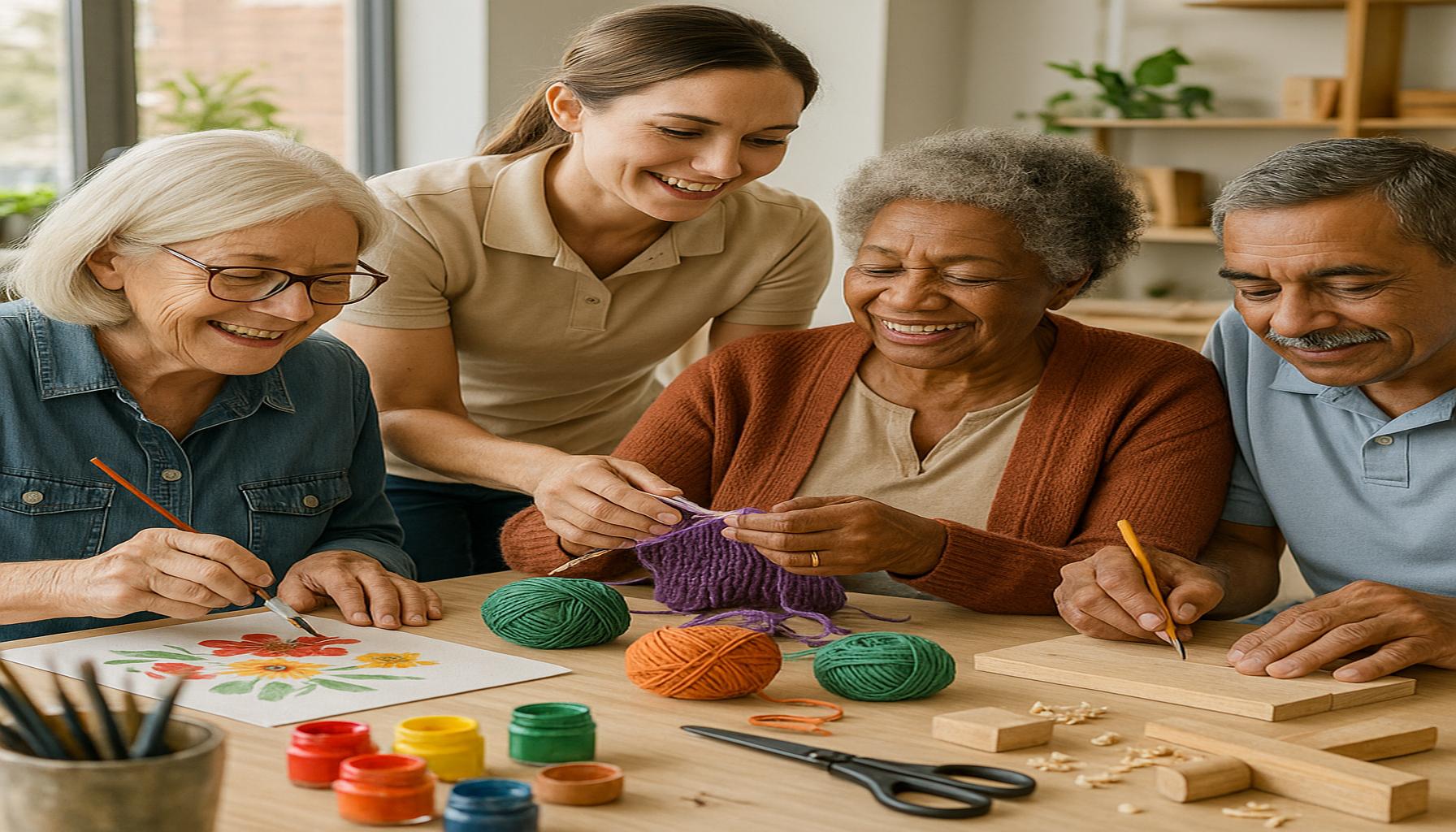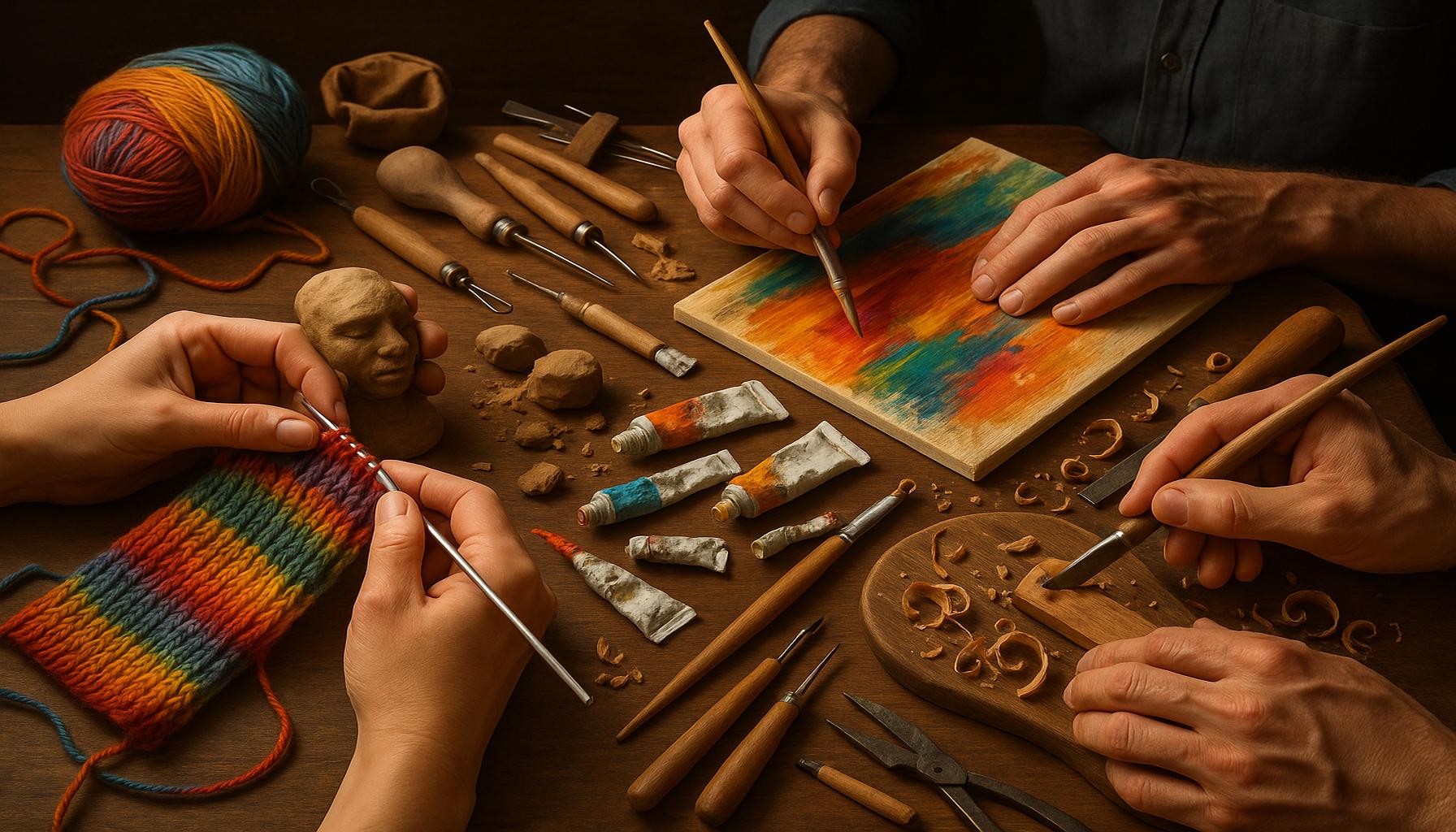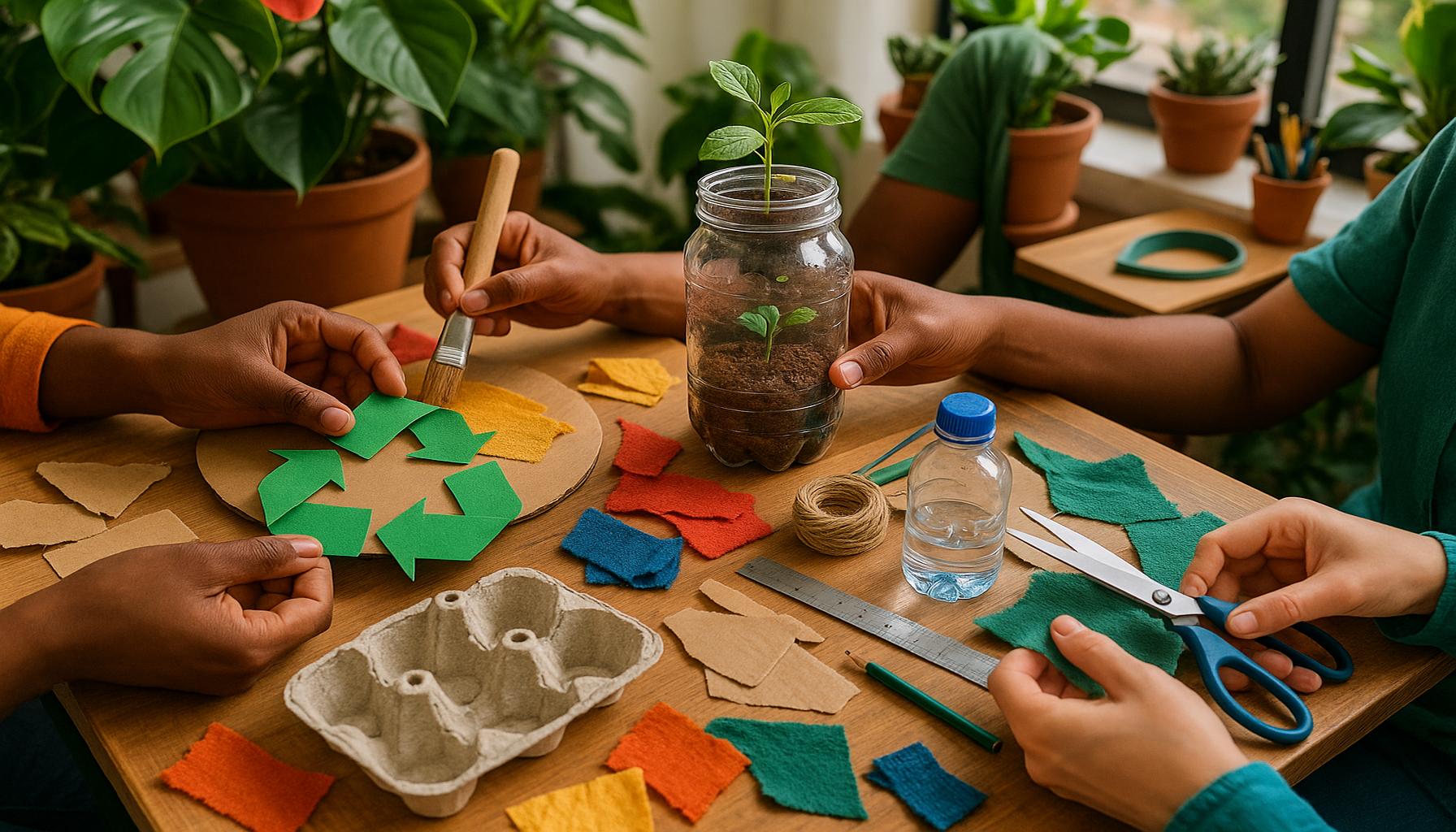Sustainability in Crafting: Creative Projects with Recycled and Eco-friendly Materials
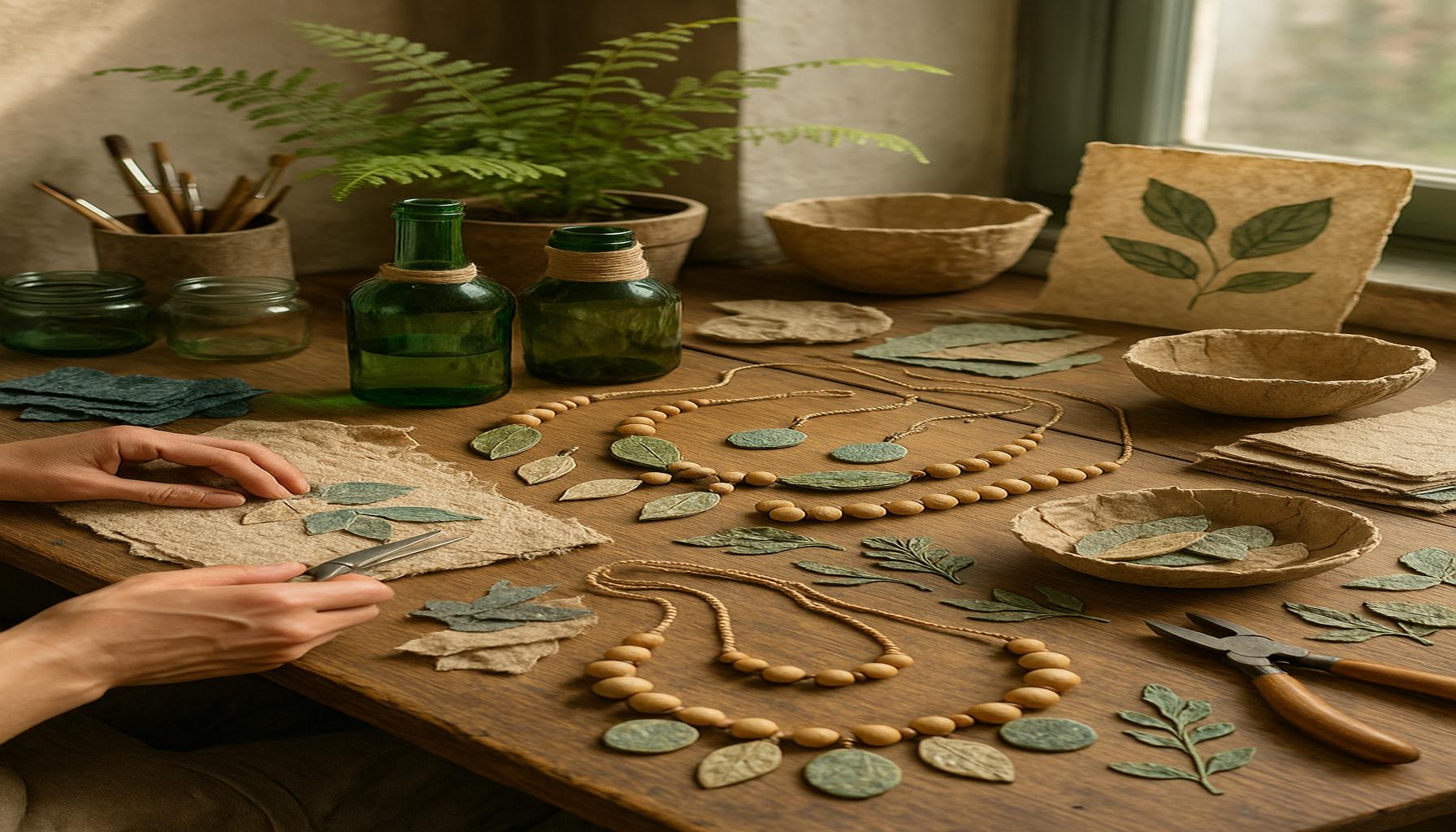
Understanding the Impact of Eco-Friendly Crafting
The rise of sustainability in crafting reflects a broader shift in societal values, with many individuals recognizing the importance of environmental stewardship. Crafting has moved beyond simple recreational engagement to become a vital method of ecological advocacy. By employing recycled and eco-friendly materials, hobbyists and artists alike are not just creating art but making meaningful contributions to the planet’s health.
Exploring Sustainable Materials
There are several materials that lend themselves beautifully to eco-friendly crafting, each inviting a unique approach to creativity. Here are a few that can ignite your inspiration:
- Recycled Paper: The world of paper crafting is vast. Individuals can create everything from intricate paper mâché sculptures to greeting cards using old magazines and newspapers. For instance, you might use newspaper strips to fabricate customized gift boxes or ornaments, giving a new life to what would be discarded.
- Glass Jars: Glass jars are incredibly versatile. In the United States, many crafters transform these simple containers into stunning candle holders, herb planters, or storage solutions for various items around the home. Imagine a summer evening illuminated by DIY candle holders made from recycled mason jars—both functional and visually appealing!
- Fabric Scraps: Instead of tossing leftover fabric remnants, crafters are piecing them together to create quilts, textile art, or home décor. For example, a patchwork quilt made from vintage fabric scraps not only showcases personal style but also serves as a conversation starter about the value of reusing materials.
The Benefits of Eco-Friendly Crafting
Engaging in sustainable crafting transcends mere artistic expression. It offers several significant benefits that resonate with communities and individuals alike:
- Reduce Waste: By reimagining potentially disposable items, crafters effectively divert materials from landfills. This practice not only mitigates environmental damage but also promotes a culture of mindful consumption.
- Support Local Economies: Choosing to source materials from local suppliers or small businesses directly impacts community sustainability. By investing in local, eco-conscious stores, crafters support jobs and foster economic resilience.
- Inspire Thoughtful Consumption: Crafting can be a catalyst for discussions about environmental impact. When sharing projects with others, crafters encourage critical thinking about waste and consumption, promoting a larger conversation about sustainability.
Elevating Crafting to New Heights
As you embark on your eco-friendly crafting journey, you will uncover a world where creativity merges with conscientiousness. The projects you engage in not only foster artistic talent but also serve as a testament to the collective effort toward sustainability. As we explore more intricate ideas and innovative practices, we can illustrate how crafting becomes a form of activism, celebrating the beauty of creation while honoring our responsibility to the planet.
In conclusion, crafting with recycled and eco-friendly materials is more than an avenue for self-expression; it stands as a vital response to environmental challenges. Embracing these practices allows us not just to create, but to inspire a community rooted in sustainability, adding to the tapestry of ecological awareness across the United States and beyond.
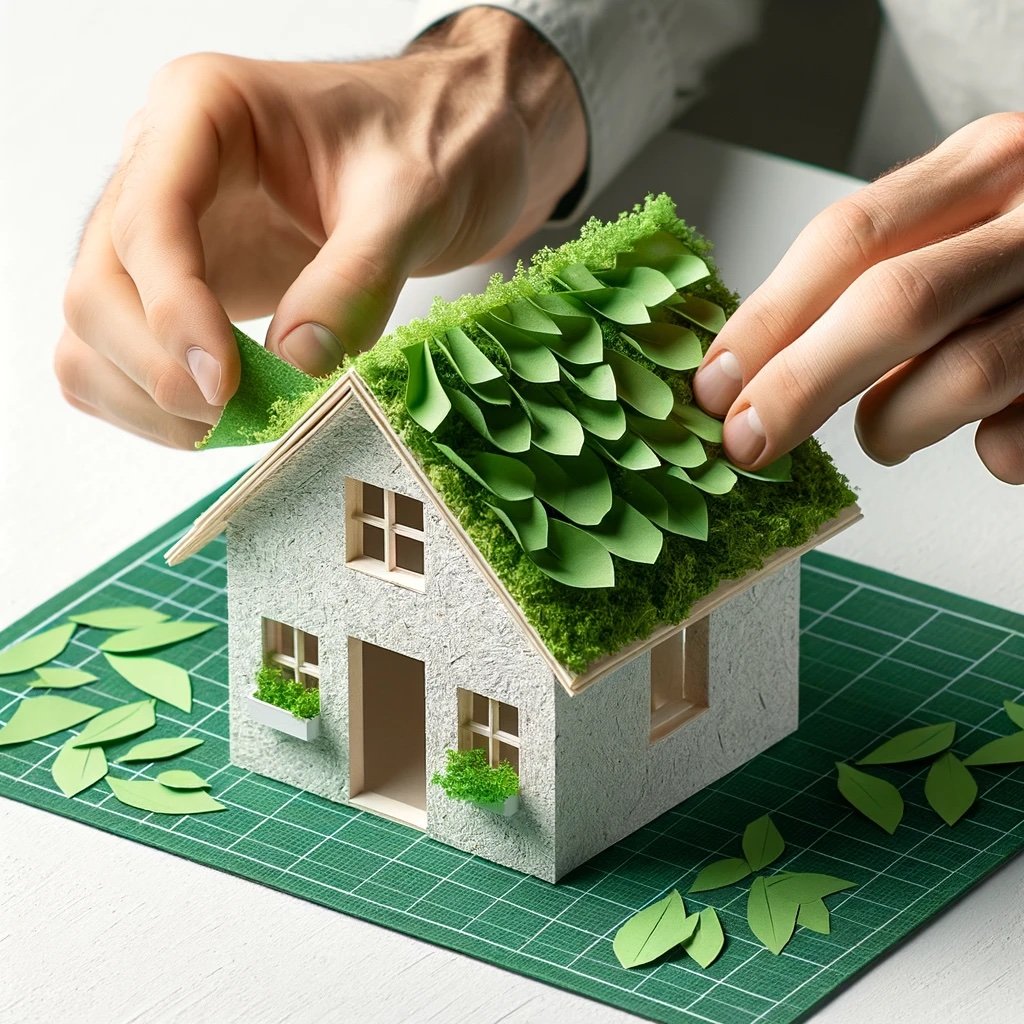
DISCOVER MORE: Click here to enhance your relaxation techniques
Crafting with Purpose: Innovative Ideas to Inspire
In the quest for sustainability, crafting offers a unique avenue to creatively reclaim materials that would otherwise contribute to waste. By prioritizing eco-friendly resources, crafters can not only express their artistic vision but also champion the message of sustainability. This article delves into various innovative projects that showcase how recycled and eco-friendly materials can be transformed into beautiful creations, elevating the crafting experience to new heights.
Upcycling: A Craft Revolution
Upcycling has emerged as a powerful trend in the crafting community. This concept entails repurposing old items into new, functional pieces, often imbued with a sense of personal style. Here are some innovative upcycling project ideas to spark your creativity:
- Furniture Makeovers: A fresh coat of paint can breathe new life into thrifted furniture. Transform a worn-out chair with vibrant colors, soft finishes, or fun patterns to fit modern décor. Not only are you repurposing an old piece, but you’re also reducing the need for new furnishings, which can be resource-intensive to produce.
- Jewelry from Unexpected Sources: Old electronics and broken jewelry can become the raw materials for unique accessories. For instance, circuit boards can be cut and polished into stunning earrings, while bits of old necklaces can be rearranged into dazzling, bespoke pieces. This kind of project showcases the beauty in imperfections and champions sustainability.
- Garden Art with Recycled Materials: Unused household items, such as plastic bottles, can be transformed into striking garden planters or whimsical garden stakes. By using what you have on hand, you create charming outdoor décor that also minimizes waste.
The Aesthetic of Natural Materials
Beyond recycled goods, there’s a wealth of eco-friendly materials derived from nature that can enhance your crafting projects. Using sustainably sourced resources not only contributes to environmental protection but also lends a unique aesthetic to your creations. Consider these popular natural materials:
- Bamboo: Known for its rapid growth and renewability, bamboo can be used in various craft projects, from furniture to accessories. Its natural finish adds an elegant touch to any design.
- Hemp and Jute: These biodegradable fibers are perfect for making sturdy bags, rugs, or decorative items. Their rustic charm can impart warmth and texture to home environments.
- Natural Dyes: Experimenting with plant-based dyes can elevate your fabric or paper crafts. You can create beautiful hues from items found in your kitchen, such as beetroot or avocado pits, steering clear of synthetic chemicals.
These sustainable resources not only resonate with eco-conscious values but also pave the way for distinctive, personalized craftsmanship. As you explore these creative paths, the act of making becomes a celebration of sustainability—encouraging others to rethink how they view waste and materials in their own lives.
As we dive deeper into the realm of sustainability in crafting, it becomes evident that using recycled and eco-friendly materials not only contributes positively to the environment but also sparks creativity and innovation. By repurposing materials that would otherwise be discarded, crafters can minimize waste and reduce their carbon footprint. This approach encourages a shift away from traditional consumerism towards a more sustainable lifestyle.One of the standout benefits of eco-friendly crafting is the ability to create unique and personalized items. Items made from upcycled materials often carry a story, contributing to their allure and value. For instance, transforming old glass jars into stunning lanterns or using fabric scraps to create colorful quilts not only showcases personal creativity but also sets a precedent for others to embrace sustainability in their crafting endeavors.Moreover, engaging in projects utilizing recycled materials fosters a sense of community. Workshops and classes focusing on sustainability gather like-minded individuals who share a passion for crafting and environmental stewardship. This collaborative spirit often extends to online platforms where crafters exchange tips, ideas, and finished creations, further fueling the movement toward sustainable crafting.Incorporating natural materials such as bamboo or organic cotton is another avenue to explore. These alternatives not only decompose naturally but also offer durability and aesthetic appeal. They can be utilized in various projects from jewelry-making to home decor, underscoring the versatility of eco-friendly crafting options.To encourage this environmentally responsible approach to crafting, it’s essential to highlight available resources. Crafting blogs, DIY videos, and sustainability-focused communities offer a wealth of information, inspiring individuals to discover new techniques and projects. As this trend gains momentum, the crafting world is poised to play a pivotal role in promoting sustainability, creativity, and responsible consumption.The movement towards sustainability in crafting is indeed a transformative journey, paving the way for crafters to leave a positive impact on the world. Embracing recycled and eco-friendly materials not only nurtures creativity but also substantiates a commitment to a greener future. With endless possibilities and inspiring projects, it’s time to roll up your sleeves and embark on your own sustainable crafting adventure.
| Category | Advantages |
|---|---|
| Creative Expression | Unique Products made from recycled materials tell a story and showcase individuality. |
| Community Engagement | Collaboration through workshops and online communities fosters connection among crafters. |
DISCOVER MORE: Click here for innovative gardening tips
Transforming the Ordinary: Everyday Items into Extraordinary Crafts
Utilizing recycled and eco-friendly materials sparks creativity and generates unique projects that turn everyday items into extraordinary masterpieces. The possibilities are endless when it comes to interpreting the old with a fresh perspective. Below are some exciting project ideas that highlight the beauty in transformation and inspiration derived from items many would consider disposed of.
Fabric Scraps: From Waste to Wearables
In the world of crafting, fabric scraps can easily become a treasure trove of opportunities. Instead of discarding leftover pieces from previous projects, consider recycling them into patchwork creations. Patchwork quilts not only preserve memories associated with fabric remnants but also provide warmth and comfort. Additionally, crafting tote bags from unused fabric creates functional items which contribute to reducing plastic waste.
- Upcycled Clothing: Breathe new life into outdated wardrobe items. A simple sewing project can transform a worn-out shirt into a trendy tote bag, or old dresses can be reimagined into stylish aprons. This approach not only reduces waste but also promotes a sustainable fashion sense.
- Fabric Collages: Discover the artistic potential within fabric scraps by creating textured wall hangings. Layer and stitch various materials for a beautiful tapestry that tells a story of sustainability through craftsmanship.
Cardboard Creations: A Crafting Blank Canvas
Cardboard isn’t merely packaging material; it’s an artist’s blank canvas waiting to be transformed. Many eco-crafters tap into this resource for innovative projects that are both practical and whimsical.
- Gift Boxes and Wrapping: Why not use cardboard boxes to create beautiful gift packaging? Cut and decorate old shipping boxes to fashion unique gift containers that impart a personal touch to presents—all while minimizing waste.
- Children’s Toys: Cardboard can be repurposed into engaging toys for kids. Creatively cutting and assembling cardboard tubes or flat sheets can lead to the creation of playhouses, vehicles, and even puzzles. Such projects promote hands-on creativity and resourcefulness among young crafters.
Eco-friendly Paints and Adhesives: Natural Solutions for Sustainable Creations
To ensure that crafting remains eco-conscious, the use of conventional paints and adhesives, often laden with toxic chemicals, should be reconsidered. Instead, look for natural and non-toxic alternatives that align with sustainable crafting values.
- Plant-Based Paints: Non-toxic, natural paints made from earth pigments or vegetable dyes offer vibrant colors without harmful chemicals. Brands specializing in eco-friendly paints are now more accessible, making it easier for crafters to find safe options.
- Homemade Adhesives: Reinvent your crafting supply cabinet by concocting your own glue using simple ingredients like flour and water. Not only is this approach sustainable, but it also provides an educational opportunity about the chemistry behind everyday items.
As we engage with crafting through the lens of sustainability, it’s crucial to highlight the importance of community engagement. Join local crafting groups or participate in workshops that focus on using recycled materials. These gatherings not only foster creativity but also promote valuable exchanges of knowledge about sustainable practices.
In the landscape of crafting, adopting innovative approaches to recycled and eco-friendly materials ultimately empowers individuals to tell their stories through creation. By continuing to explore and embrace these sustainable methods, crafters help pave the way toward a more sustainable future, one creative project at a time.
DIVE DEEPER: Click here to explore the beauty of nature through art
Conclusion: Crafting a Sustainable Future
As we conclude our exploration of sustainability in crafting, it’s clear that utilizing recycled and eco-friendly materials opens doors to limitless creativity while fostering environmental responsibility. By transforming everyday items into extraordinary crafts, crafters not only reduce waste but also contribute to a growing movement that values sustainability. Projects that utilize fabric scraps, cardboard, and non-toxic materials demonstrate that a shift toward eco-conscious crafting can harmonize creativity and sustainability.
Engaging with the crafting community further amplifies these efforts. By participating in local workshops and sharing innovative ideas, crafters can inspire one another to embrace sustainable practices in their projects. This collective enthusiasm cultivates a culture where environmental consciousness is the norm rather than the exception.
Moreover, as we continue to innovate and experiment, we can help redefine the narrative surrounding waste. Instead of viewing discarded materials as refuse, we invite crafters to see them as opportunities for expression and creativity. The future of crafting lies in our hands, and through thoughtful practices, we can ensure that each project contributes positively to our planet.
Ultimately, sustainable crafting not only beautifies our surroundings but also enriches our lives and communities. Let us embrace this creative journey and empower ourselves to turn imagination into impactful actions. Together, we can craft a sustainable future, one creative project at a time.
